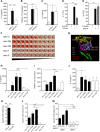Serotype 1 and 8 Pneumococci Evade Sensing by Inflammasomes in Human Lung Tissue
- PMID: 26317436
- PMCID: PMC4552725
- DOI: 10.1371/journal.pone.0137108
Serotype 1 and 8 Pneumococci Evade Sensing by Inflammasomes in Human Lung Tissue
Abstract
Streptococcus pneumoniae is a major cause of pneumonia, sepsis and meningitis. The pore-forming toxin pneumolysin is a key virulence factor of S. pneumoniae, which can be sensed by the NLRP3 inflammasome. Among the over 90 serotypes, serotype 1 pneumococci (particularly MLST306) have emerged across the globe as a major cause of invasive disease. The cause for its particularity is, however, incompletely understood. We therefore examined pneumococcal infection in human cells and a human lung organ culture system mimicking infection of the lower respiratory tract. We demonstrate that different pneumococcal serotypes differentially activate inflammasome-dependent IL-1β production in human lung tissue and cells. Whereas serotype 2, 3, 6B, 9N pneumococci expressing fully haemolytic pneumolysins activate NLRP3 inflammasome-dependent responses, serotype 1 and 8 strains expressing non-haemolytic toxins are poor activators of IL-1β production. Accordingly, purified haemolytic pneumolysin but not serotype 1-associated non-haemolytic toxin activates strong IL-1β production in human lungs. Our data suggest that the evasion of inflammasome-dependent innate immune responses by serotype 1 pneumococci might contribute to their ability to cause invasive diseases in humans.
Conflict of interest statement
Figures




References
Publication types
MeSH terms
Substances
LinkOut - more resources
Full Text Sources
Other Literature Sources

